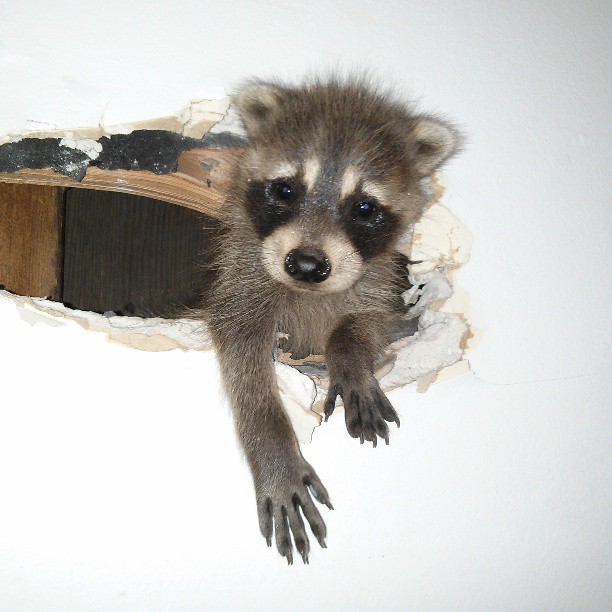
Baby Raccoons: A Comprehensive Guide to Their Care and Development
Introduction
Baby raccoons, also known as kits, are undeniably adorable creatures that often evoke a sense of wonder and curiosity. Their playful antics and endearing appearance have captured the hearts of many, leading to their popularity as pets. However, it is crucial to recognize that baby raccoons are wild animals with specific needs and requirements. This comprehensive guide aims to provide a thorough understanding of baby raccoon care, development, and behavior, empowering you to make informed decisions regarding their well-being.
Natural History and Habitat
Raccoons (Procyon lotor) are medium-sized mammals belonging to the Procyonidae family. They are native to North America and can be found in various habitats, including forests, woodlands, and urban areas. Raccoons are omnivorous and opportunistic feeders, consuming a wide range of foods such as fruits, nuts, insects, and small animals.
Baby raccoons are born in dens, which can be located in trees, abandoned burrows, or other sheltered areas. They typically stay with their mother for several months, learning essential survival skills and social behaviors.
Physical Characteristics
Baby raccoons are born with a distinctive black mask around their eyes, which helps them camouflage in their surroundings. Their fur is soft and gray, and they have a bushy tail with alternating black and white rings. Baby raccoons weigh around 2-4 ounces at birth and grow rapidly, reaching a weight of 10-15 pounds as adults.
Development and Behavior
Baby raccoons undergo significant developmental changes during their first year of life. Here is a general overview of their development:
- Birth to 8 weeks: Kits are born blind and deaf and rely heavily on their mother for warmth, food, and protection. They begin to open their eyes around 3-4 weeks of age and start exploring their surroundings.
- 8 weeks to 12 weeks: Kits become more active and playful, interacting with their siblings and mother. They start to develop their climbing and foraging skills.
- 12 weeks to 16 weeks: Kits begin to wean from their mother’s milk and start eating solid foods. They become more independent and curious, exploring their surroundings more extensively.
- 16 weeks to 24 weeks: Kits reach sexual maturity and are ready to leave their mother’s care. They establish their own territories and begin to live independently.
Baby raccoons are highly social animals and form strong bonds with their family members. They communicate through a variety of vocalizations, including chirps, squeals, and growls. Raccoons are also known for their intelligence and adaptability, which allows them to thrive in various environments.
Care and Nutrition
Providing proper care for baby raccoons is essential for their health and well-being. Here are some key considerations:
- Diet: Baby raccoons should be fed a specialized formula designed for their nutritional needs. As they grow older, they can gradually transition to a diet of solid foods, including fruits, vegetables, insects, and small rodents.
- Housing: Baby raccoons require a safe and secure enclosure that provides ample space for movement and exploration. The enclosure should be escape-proof and have a variety of enrichment items, such as climbing structures, toys, and hiding places.
- Temperature: Baby raccoons are susceptible to cold temperatures, so it is crucial to maintain a warm environment for them. A heat source, such as a heating pad or heat lamp, should be provided in their enclosure.
- Hygiene: Baby raccoons should be kept clean and free of parasites. Regular bathing and grooming are essential for their health.
- Socialization: Baby raccoons benefit from regular interaction with humans and other raccoons. Socialization helps them develop appropriate social behaviors and reduces the risk of aggression.
Health and Common Issues
Baby raccoons are prone to certain health issues, including:
- Parvovirus: A highly contagious virus that can cause severe gastrointestinal symptoms and lead to death.
- Distemper: A viral infection that affects the respiratory, digestive, and nervous systems.
- Roundworms and hookworms: Intestinal parasites that can cause weight loss, diarrhea, and anemia.
- Mange: A skin condition caused by mites that can lead to hair loss, itching, and skin irritation.
Regular veterinary checkups are essential for detecting and treating health issues early on. Vaccinations and deworming are also crucial for preventing diseases.
Legal Considerations
In many areas, it is illegal to keep raccoons as pets without a permit. It is important to check local regulations before acquiring a baby raccoon. Additionally, raccoons can carry diseases that can be transmitted to humans, so it is essential to take appropriate precautions when handling them.
Conclusion
Baby raccoons are fascinating creatures that require specialized care and attention. By understanding their natural history, development, and needs, you can provide them with a healthy and enriching environment. However, it is crucial to remember that raccoons are wild animals and should not be kept as pets without proper permits and knowledge. If you encounter a baby raccoon in the wild, it is best to leave it alone and allow its mother to care for it.
